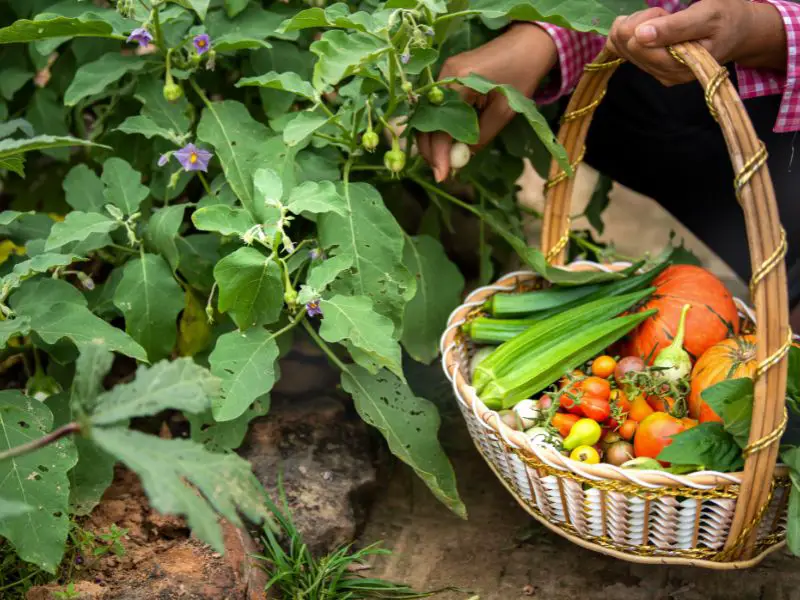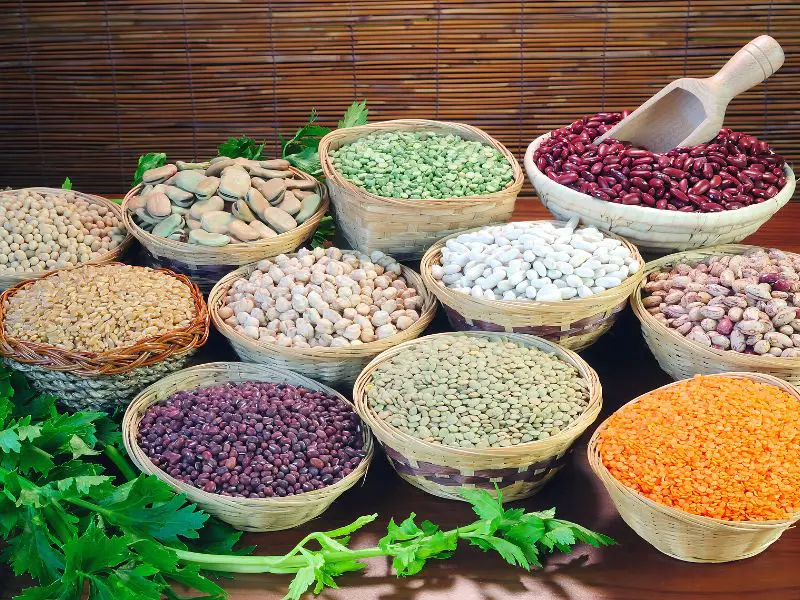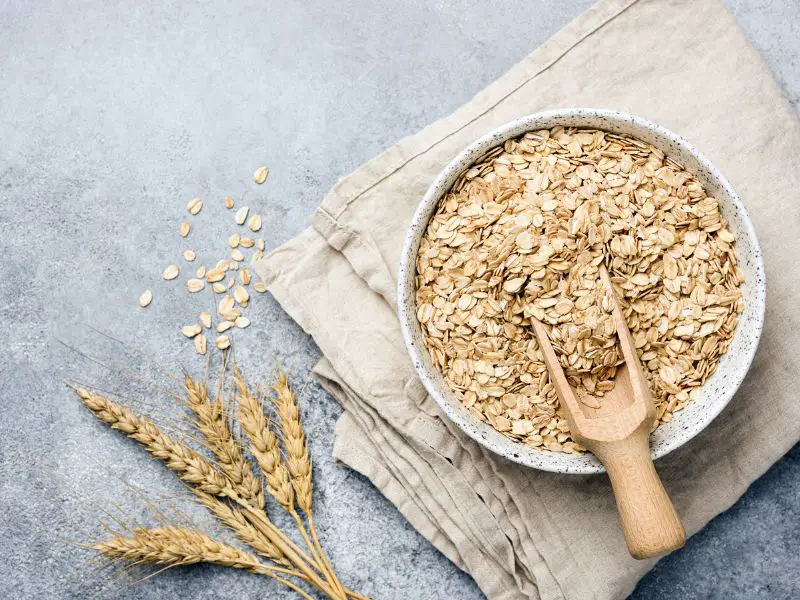The term sustainable foods have been thrown around more often lately. But do you know how to eat sustainably?
Although the concept of sustainability has existed for millennia, it has recently come to the forefront as social movements and organizations such as Farm-to-Table and Slow Food USA gather momentum.
This popular eating pattern benefits overall health and can have long-term effects on local communities, agricultural workers, animals, and the environment.
So, what exactly does it mean to eat sustainably? And how can you be sure that you are adhering to an environmentally friendly diet? This article will cover all you need to know about sustainable food and foods to eat that effectively reduce your carbon footprint.

What Does It Mean to Eat Sustainably?
What is sustainable food? The term sustainable food has been used to describe foods that are produced and prepared in a manner that reduces our carbon footprint and the impact on the environment. It contributes to global food security and social equity.
Eating sustainably means eating local, fresh, and seasonal food grown and produced in ways that do not harm the environment or compromise our health. It could mean eating locally-grown food, buying from farmer’s markets, eating less meat, buying organic foods, eating less processed foods, and supporting local farms.
Factors of Sustainability in Food
There is no single truth in defining food sustainability. However, some of the factors below cover the fundamentals.
- Sustainable Farming Practices
Farmers who grow crops organically and use natural fertilizers are way more sustainable than those who use chemicals to fertilize their crops. Organic farmers also tend to minimize their use of pesticides and herbicides when growing their crops.
This protects the environment and ensures the food is healthier and better tasting. Furthermore, organic farmers also tend to promote biodiversity in their farms and livestock-rearing methods.
This promotes soil fertility and biodiversity within the farm ecosystem. Also, organic farming methods are better for the environment since they require less energy and water than traditional farming methods. These factors make them more sustainable in the long run.
- Minimal Environmental Impact
The goal of sustainable food is not to harm or waste natural resources. It also does as little as possible to contribute to climate change during production.
This includes using energy wisely during the transportation, processing, and packaging of foods. It also aims to minimize the use of water and fossil fuels and reduce pollution from farm production activities.
They also try to eliminate unnecessary packaging material when transporting food products to the market. All these steps help minimize the negative impact of food production on the environment.

- Promotes Animal Welfare
Some farmers and producers may not adopt all the principles of sustainable agriculture, but they still work to promote animal welfare within their operations. This includes providing animals with shelter and good nutrition and allowing them access to natural pastures where they can graze. This reduces animal stress and improves their health and productivity. Many organic farms also follow humane methods of slaughtering animals, such as by stunning them with electric shocks or carbon dioxide before killing them to prevent unnecessary suffering.
- Good Workplace Environment
A nice workplace environment is fundamental to sustainability, as it enables workers to grow and achieve their highest potential. Every worker deserves to work in an environment where they feel supported and valued.
Workplace safety, employee recognition, employee education, supportive and positive management, and employee motivation are good symptoms of a good workplace environment.
What Are the World’s Most Sustainable Foods?
Read along to learn about some foods that score the highest when it comes to their credentials in terms of sustainability and find out exactly why these foods are the best of the best.
1. Mushrooms
One of the simplest ingredients you can cook with is also one of the most versatile and sustainable in the world. Mushrooms are easy to grow on logs in a forest-based setting without the need for expensive equipment or even electricity- their production also have an extremely low carbon footprint. In addition, mushrooms need a relatively small amount of land; in fact, just one acre can yield up to one million pounds of mushrooms.

2. Pulses
Pulses are the edible seeds of plants in the legume family, such as beans and lentils. They are a popular source of protein and nutrients. Pulses are also very sustainable, requiring a small amount of water and fertilizer to produce a high yield. A hectare of land can have up to 4 tons of pulses annually.
They are also an essential source of plant-based protein for vegans and vegetarians as they provide a good source of amino acids that our bodies need to function properly. Furthermore, pulses are an excellent source of fiber for a healthy digestive system and regular bowel movements.
3. Seaweed
Seaweed is one of the most nutrient-packed foods in the world, containing essential vitamins and minerals as well as beneficial antioxidants, minerals, and enzymes. Additionally, seaweed can be grown in shallow saltwater bodies that are easily accessible without requiring much water or other resources.
In addition, seaweed removes excess nutrients such as phosphate and nitrogen from the water, providing a solution to issues caused by agricultural runoffs, fish farms, and sewage treatment plants. In addition to absorbing and storing carbon dioxide from the atmosphere, the massive kelp forests on the ocean floor serve a significant and underappreciated function in removing carbon dioxide from the atmosphere.

4. Organic and Locally Grown Vegetables and Fruits
Organic and locally produced vegetables and fruits are more healthy and more nutritious than conventional produce grown by big food companies, as they aren’t treated with chemicals or pesticides that pollute the environment. Growing your food is also a great way to ensure you’re eating healthy and nutritious food, as you know truly what goes into it. You can also grow your produce in pots, so it doesn’t take up space.
5. Shellfish
Mussels, oysters, clams, and other bivalves, in particular. Why? These tough guys are something of a sustainability triple treat. Not only are they nutrient-dense, fast-growing, and require little room, but they also help clean the ocean wherever they grow by consuming all kinds of minute debris that would otherwise cloud the water and make it difficult for fish and other organisms to breathe. Moreover, the shells they grow extract carbon from the water, which we need to combat climate change.
6. Oats
Oats are an immensely flexible ingredient that creates sweet and savory dishes and the standard bowl of breakfast bliss. Its excellent nutritional benefits have been shown to lower cholesterol, strengthen the immune system, and even possibly avoid Type 2 diabetes, making it a nutritious staple food.
In past years, oats have been the primary ingredient in plant-based milk, an industry that contributes to cutting greenhouse gas emissions from the dairy industry. In addition, when grown in a sustainable, diverse crop rotation, it requires minimal resources to thrive.

Author’s Note
Many foods are not only healthy but are also highly sustainable. Eating organic fruits and vegetables from local farms reduces your carbon footprint because you aren’t contributing to the destruction of our environment through industrial farming practices.
Getting fit and healthy while taking care of our environment is easy with these food tips: Powerful Superfoods, Worst Fruits for the Environment, Food Waste


3 thoughts on “Sustainable Foods: What You Should Eat To Stay Healthy”